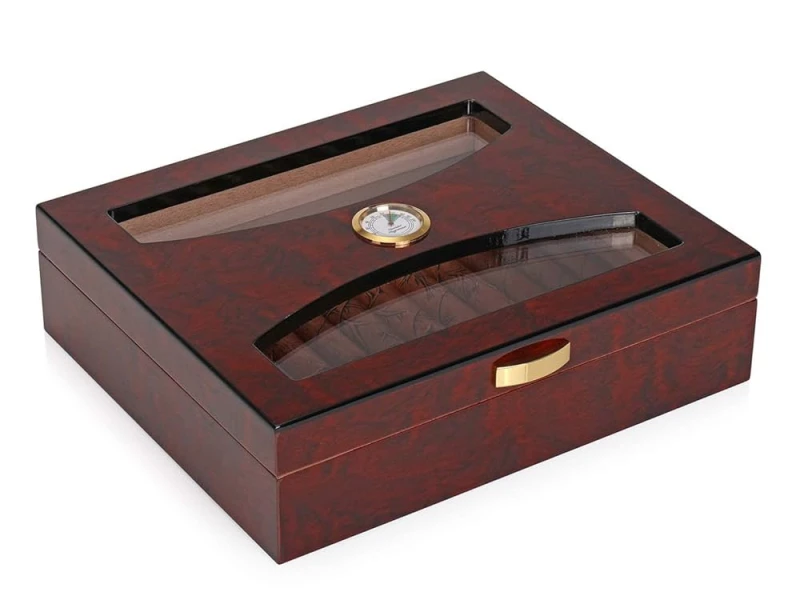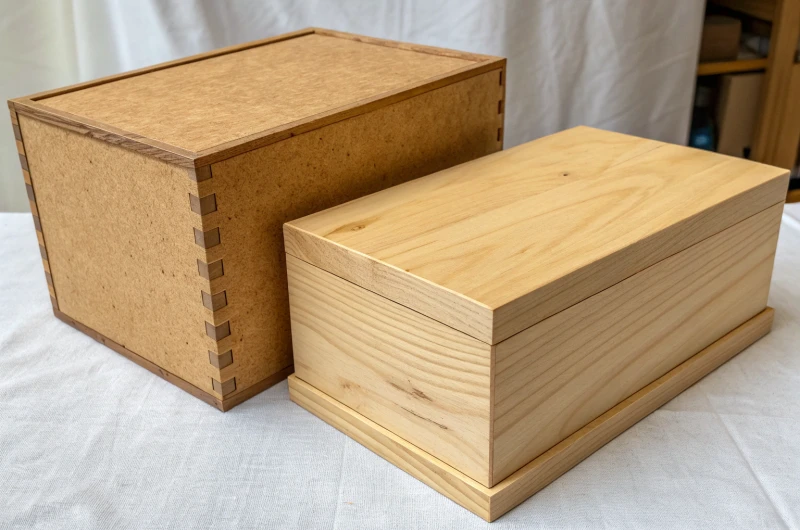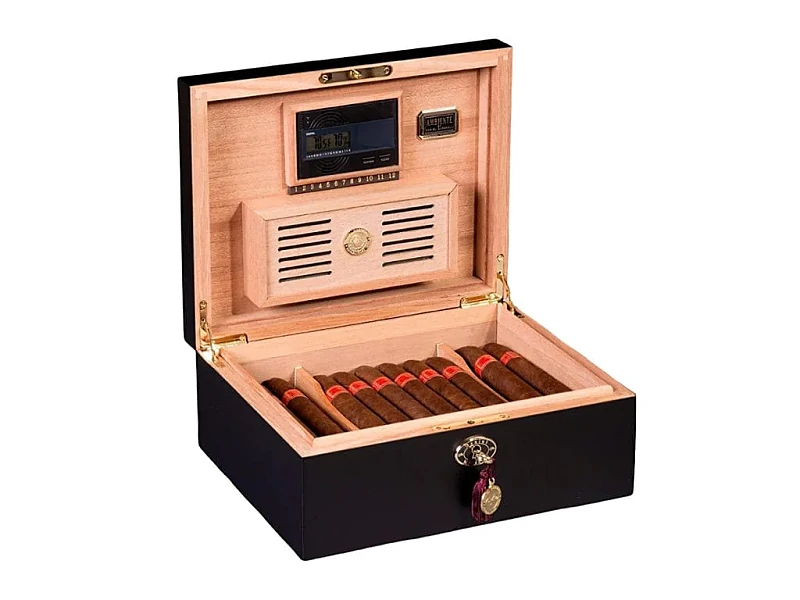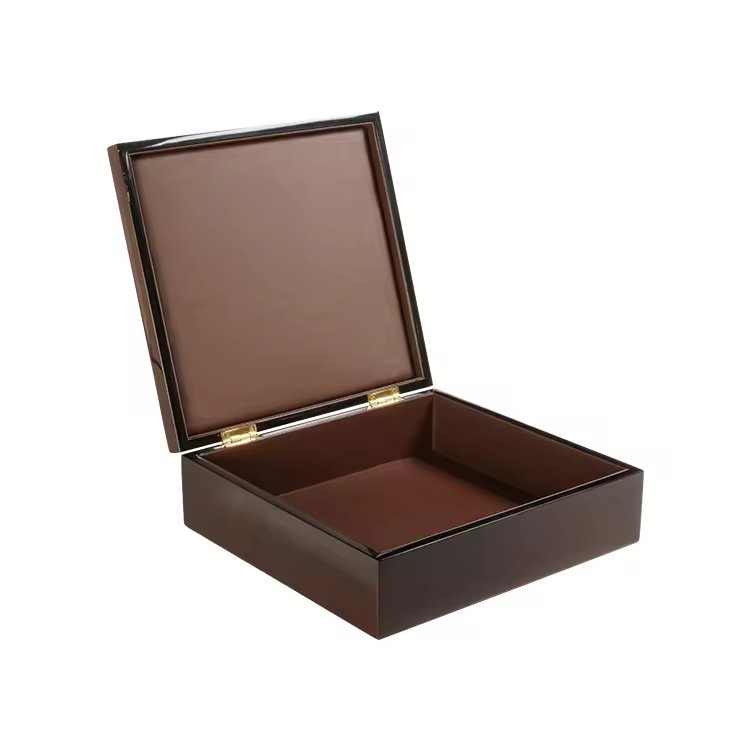
Unreleased product launches carry risk: leaks can destroy trust and damage both client and supplier.
Factories can ensure confidentiality in wooden box sampling by signing NDAs, controlling file access, securing samples, and building long-term trust through strict internal discipline.
This is not just about protecting files, but about proving reliability in every step of cooperation.
Why should NDAs (Non-Disclosure Agreements) be signed before sharing any design files?
Without legal protection, trust is only a promise.
An NDA legally binds both sides to confidentiality, ensuring design files are protected before they leave the client’s hands.

In my experience, many clients hesitate to send 3D drawings or artwork for their wooden box until an NDA is signed. This is reasonable. Design files often contain unreleased logos, product names, and packaging concepts that could reveal a new launch strategy. If a supplier mishandles the data, the client risks financial loss and reputational damage.
When I receive a new project, I always propose an NDA upfront. It signals professionalism and shows I value the client’s concerns. The NDA outlines what information is confidential, who can access it, and the penalties for misuse. This creates legal security, but it also builds psychological confidence. Clients know I take their data seriously.
Typical NDA Coverage
- Design files: 3D drawings, artwork, dimensions.
- Brand details: Product names, release timelines.
- Production process: Material sourcing, finishing details.
- Samples: Physical units must not be shared without approval.
An NDA may feel like a formality, but it is the foundation of every confidential project. Without it, cooperation is built on weak ground.
How can file management systems (restricted access, encrypted storage) prevent data leakage?
Loose file management is the biggest risk in factories.
Using controlled file systems, with restricted access and encrypted storage, ensures that confidential client files do not leak inside or outside the factory.

Factories handle many projects at once, often for competing brands. If design files are stored openly, the chance of leakage is high. That is why I implement strict file management systems. Only specific project managers and engineers have access. Files are kept in encrypted folders, not in shared public drives. When sending files to subcontractors, I watermark them or provide partial versions that cannot be misused.
For example, I once handled a project for a luxury perfume brand. The box artwork included the unreleased product name. We stored the files on a password-protected cloud, with access given only to two team members. When external plating suppliers needed logo artwork, we sent them an incomplete mock-up without the product name. This way, the risk of a leak was minimized.
File Security Practices
| Control Method | Nutzen Sie |
|---|---|
| Restricted access | Only authorized staff handle sensitive files |
| Encrypted storage | Prevents external theft or hacking |
| Watermarked files | Discourages unauthorized reuse |
| Partial disclosure | Limits exposure to subcontractors |
By treating digital files with the same care as physical products, we maintain client confidence at every stage.
What internal controls (separate teams, limited disclosure) reduce the risk of information spread?
Leaks often happen inside, not outside.
Separating project teams and limiting disclosure ensures that only necessary staff know the details, reducing the risk of information spreading across the factory.

In wooden box manufacturing, many teams are involved: carpentry, painting, lining, and accessories. If every team sees the full project, the chance of leakage grows. I reduce this by splitting the workflow. For example, carpenters see only structure drawings, painters see only surface samples, and printers see only logo files. No single worker has the full picture.
I also train managers to remind staff about confidentiality. Simple reminders like “do not discuss this project outside your team” go a long way. In sensitive projects, I even create code names for projects so workers do not know the client’s actual brand.
Internal Control Practices
- Separate responsibilities: No single team has all details.
- Need-to-know basis: Staff only see what they must handle.
- Code-named projects: Protects client identity.
- Confidentiality reminders: Regular training and notices.
This compartmentalized system mirrors how large tech companies protect product launches. It works equally well for luxury wooden packaging.
How can physical sample handling be secured, from workshop access to courier packaging?
Physical leaks can be more dangerous than digital ones.
Securing samples with restricted workshop access and careful courier packaging prevents unreleased designs from being seen or tampered with.

When making samples, the risk is not only digital. A physical sample can reveal the entire product concept. That is why I secure workshops for confidential projects. Only authorized staff can enter during production. Finished samples are stored in locked cabinets until shipment.
For shipping, I never send samples with exposed branding on the outer carton. I use plain brown boxes with no logos. Inside, I wrap the sample carefully to prevent accidental damage during transit. For very sensitive projects, I recommend express couriers with tracking numbers, and sometimes double-boxing with tamper-proof seals.
Sample Security Measures
| Schritt | Practice |
|---|---|
| Workshop control | Restricted entry during sample production |
| Locked storage | Samples kept in cabinets with key access |
| Neutral packaging | Plain cartons with no visible branding |
| Secure shipping | Tracked express couriers, tamper seals |
I once worked with a cigar brand that was launching a new limited edition. They feared leaks in customs inspections. To solve this, we double-boxed the samples and used a neutral sender name. The boxes arrived safely and confidentially.
Why is it important to avoid using confidential client designs in marketing or exhibitions?
Even subtle exposure can destroy trust.
Using confidential client designs in marketing or exhibitions violates trust, risks legal action, and damages long-term business relationships.

It may be tempting to show a beautiful new box at a trade fair or on a website. But if the client has not released the product, this is a serious breach. I have seen suppliers lose clients forever because they used unreleased designs in brochures. Even if done “for reference,” clients see it as exposure of their strategy.
That is why I follow a strict rule: never use client projects for promotion without written permission. If I want to showcase work, I either wait until the product is officially launched, or I display unbranded versions. Protecting confidentiality is more valuable than short-term marketing.
Risks of Misusing Client Designs
- Loss of client trust
- Legal consequences under NDA
- Reputation damage in industry
- Loss of future projects
Respecting confidentiality in marketing is not a limitation — it is a mark of professionalism.
What long-term trust benefits come from building a reputation for strict confidentiality management?
Confidentiality creates more than protection — it creates opportunity.
Factories that consistently protect client data build reputations as reliable partners, attracting long-term projects and premium brands.

Clients who launch unreleased products — cigars, perfumes, watches — need absolute trust. When a supplier proves confidentiality over years, clients reward them with loyalty. I have clients who return project after project because they know their designs are safe. They even refer me to other brands. This trust becomes a business advantage.
Long-Term Benefits of Confidentiality
- Repeat orders: Clients stay loyal.
- Higher-value projects: Premium brands require secure suppliers.
- Industry reputation: Word spreads among buyers.
- Stronger partnerships: Trust deepens over time.
In my 15 years of wooden box manufacturing, I have learned that confidentiality is not a cost. It is an investment in long-term success. When clients know we protect their secrets, they choose us again and again.
Schlussfolgerung
Strict confidentiality in wooden box sampling protects clients, prevents leaks, and builds lasting trust that leads to stronger partnerships.
Markenname: WoodoBox
Slogan: Maßgefertigte Holzkisten, handwerklich perfekt gefertigt
Website: www.woodobox.com
WhatsApp: +86 18359265311





